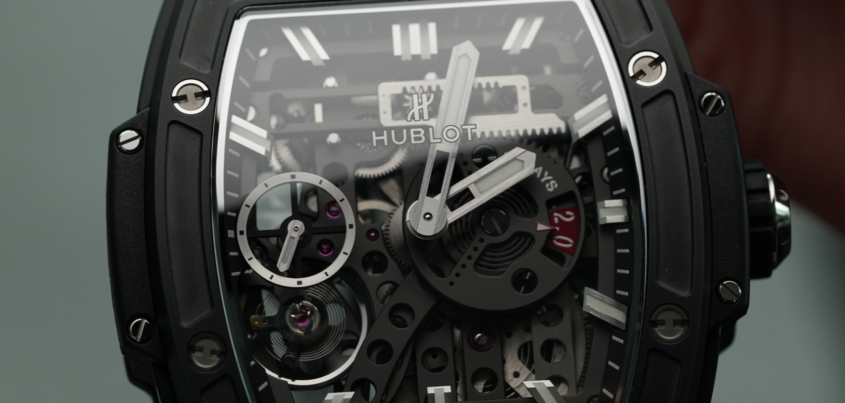 It’s not breaking any boundaries to say that Hublot is a relatively young brand, and that they’re not at all cheap. If you’re someone who insists that their watches have 200-plus years of history behind them with classic proportions and traditional construction methods, Hublot isn’t for you. If, however, you want lines crossed, bold moves taken, and innovation, then the Porthole brand has much to offer. There are few better examples of this than the in-house Hublot MECA-10 movement, with each of its 223 components epitomising modern-day luxury watchmaking. From a visual standpoint, Hublot’s MECA-10 is already a departure from the Swiss traditionalists. You won’t find any Geneva Stripes, engine turning, or hand-engraved balance bridges here. Instead, the skeleton movement displays its mechanical prowess with as much clarity as possible, showing off each part with the knowledge that it was built to be stared at, and scrutinised. The aesthetic benefit of the coated components is that the movement can be colour-coordinated with whatever the watch is, which in current Hublot offerings is in black, blue, or king gold. From the display caseback, the organised chaos of the dial is replaced with a clean, clinical display of thin and weight-reduced bridges…
It’s not breaking any boundaries to say that Hublot is a relatively young brand, and that they’re not at all cheap. If you’re someone who insists that their watches have 200-plus years of history behind them with classic proportions and traditional construction methods, Hublot isn’t for you. If, however, you want lines crossed, bold moves taken, and innovation, then the Porthole brand has much to offer. There are few better examples of this than the in-house Hublot MECA-10 movement, with each of its 223 components epitomising modern-day luxury watchmaking. From a visual standpoint, Hublot’s MECA-10 is already a departure from the Swiss traditionalists. You won’t find any Geneva Stripes, engine turning, or hand-engraved balance bridges here. Instead, the skeleton movement displays its mechanical prowess with as much clarity as possible, showing off each part with the knowledge that it was built to be stared at, and scrutinised. The aesthetic benefit of the coated components is that the movement can be colour-coordinated with whatever the watch is, which in current Hublot offerings is in black, blue, or king gold. From the display caseback, the organised chaos of the dial is replaced with a clean, clinical display of thin and weight-reduced bridges…
The post IN-DEPTH: The history of the Hublot MECA-10 Movement appeared first on Time and Tide Watches.
Continue reading ‘IN-DEPTH: The history of the Hublot MECA-10 Movement’